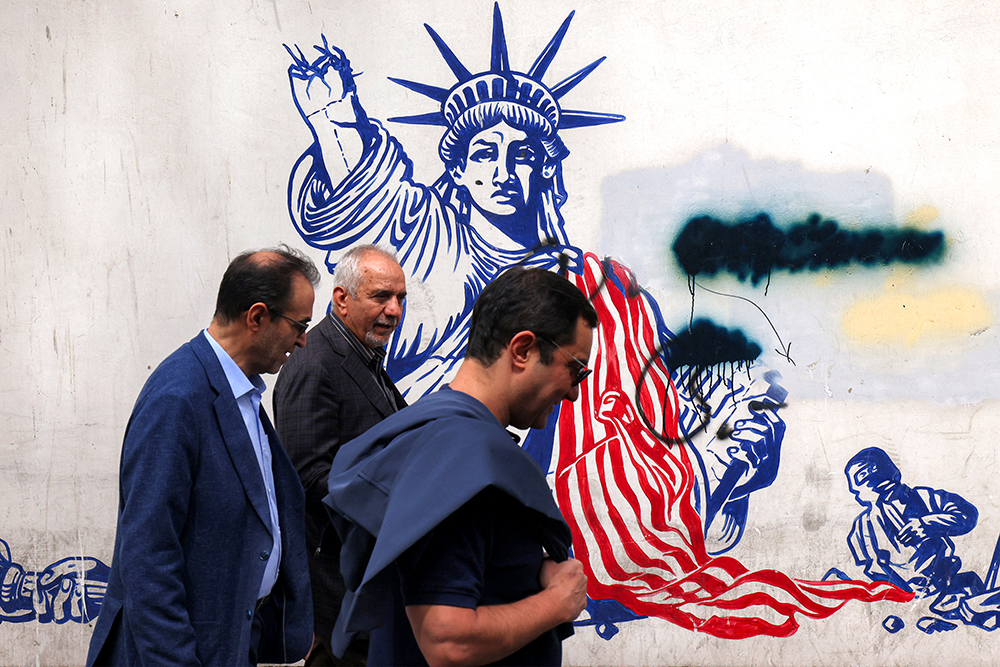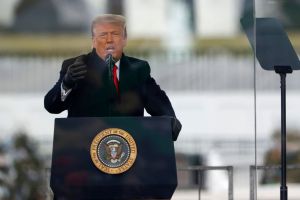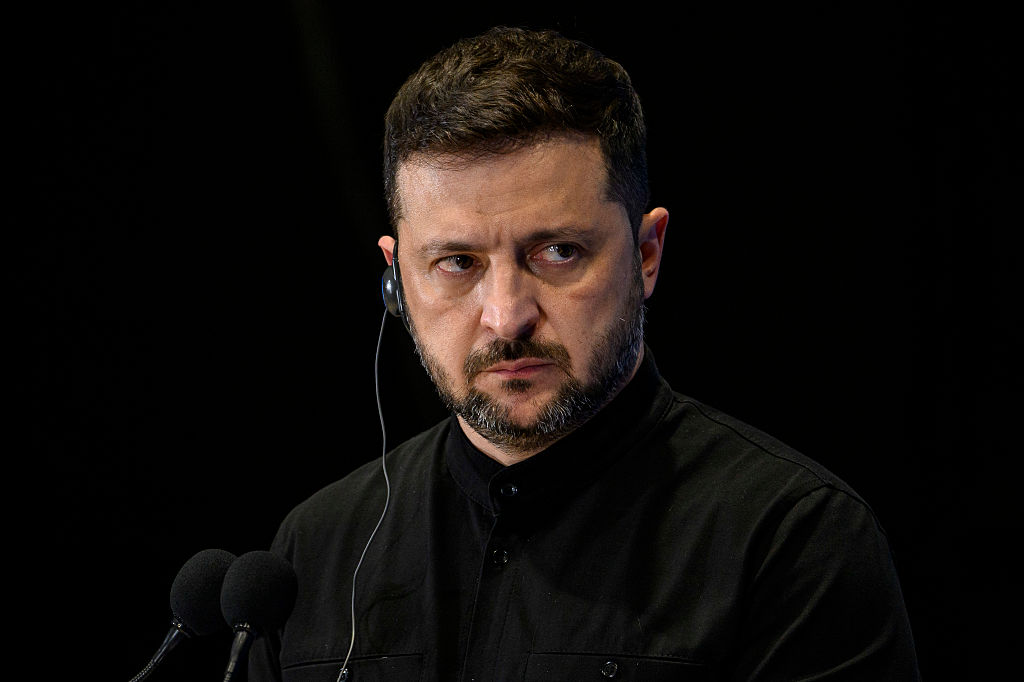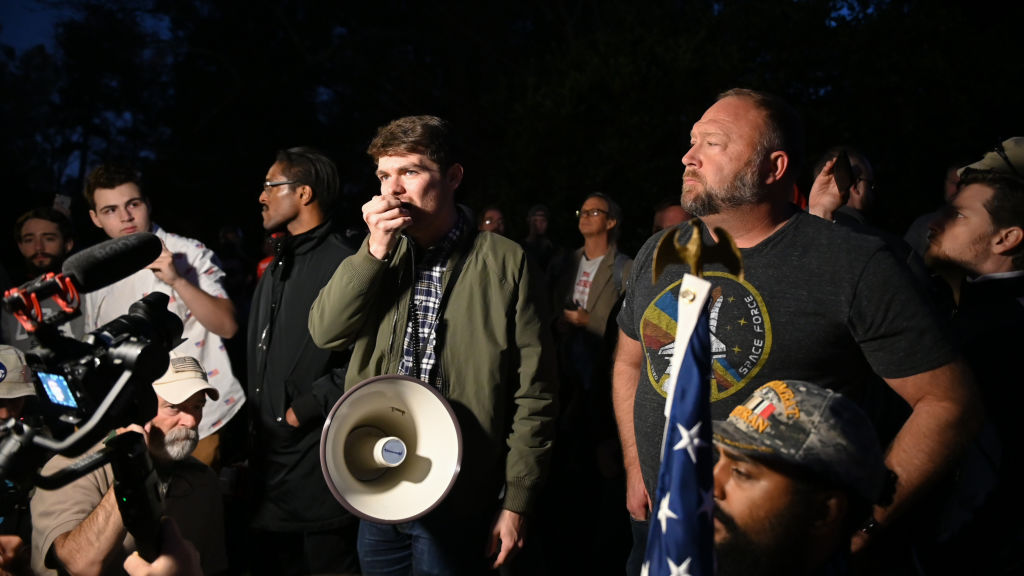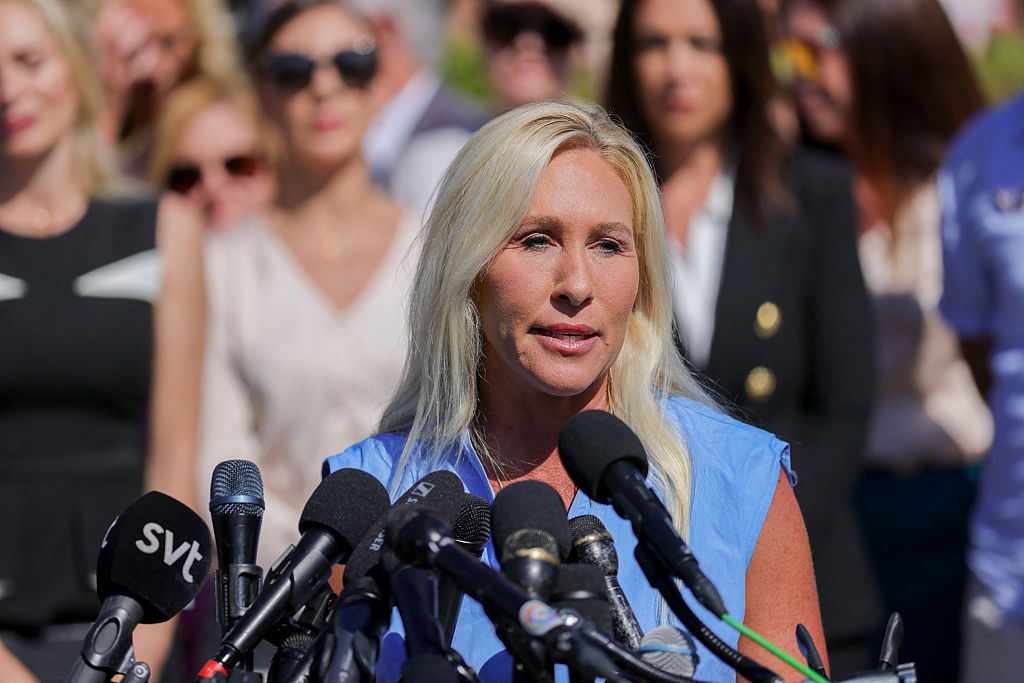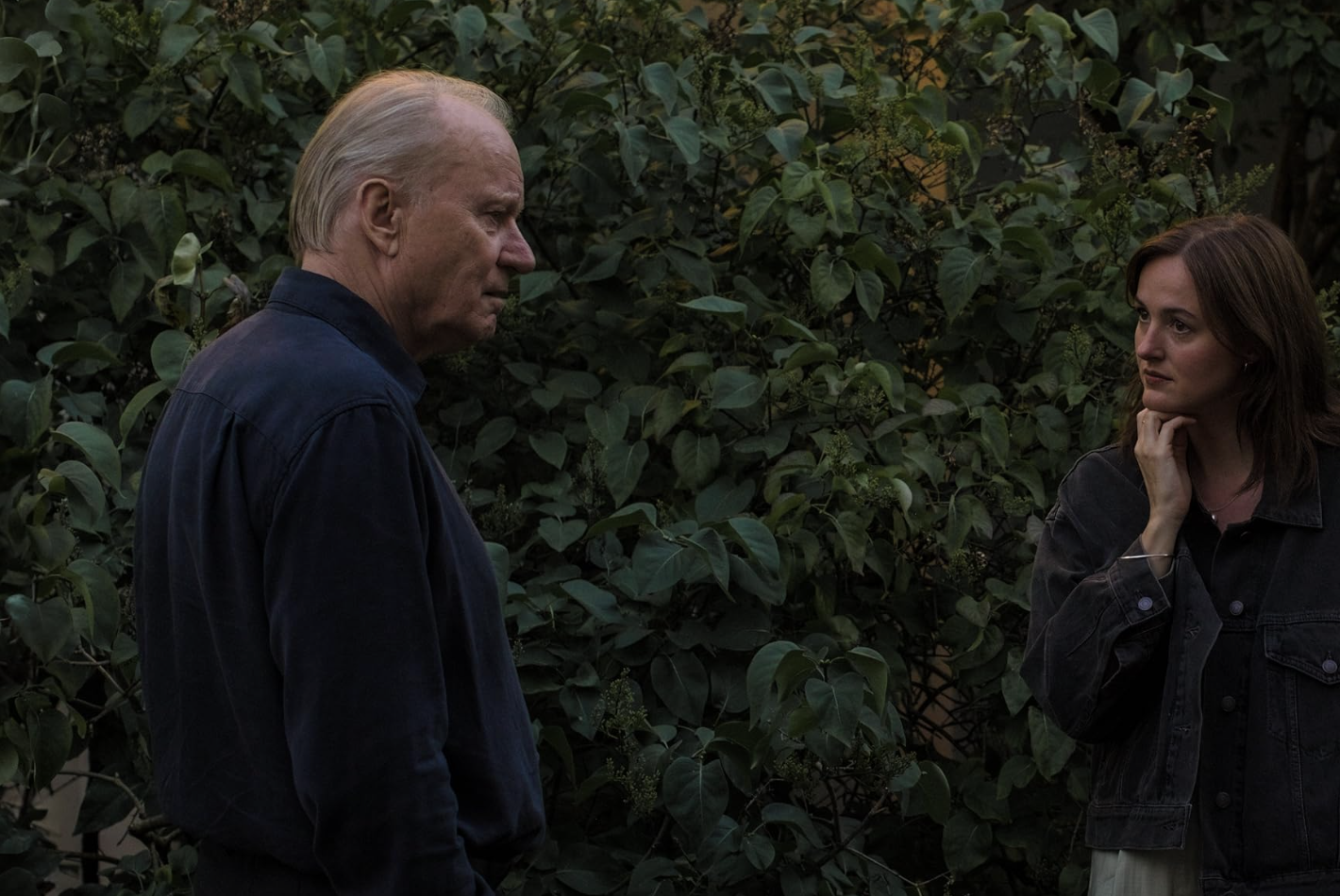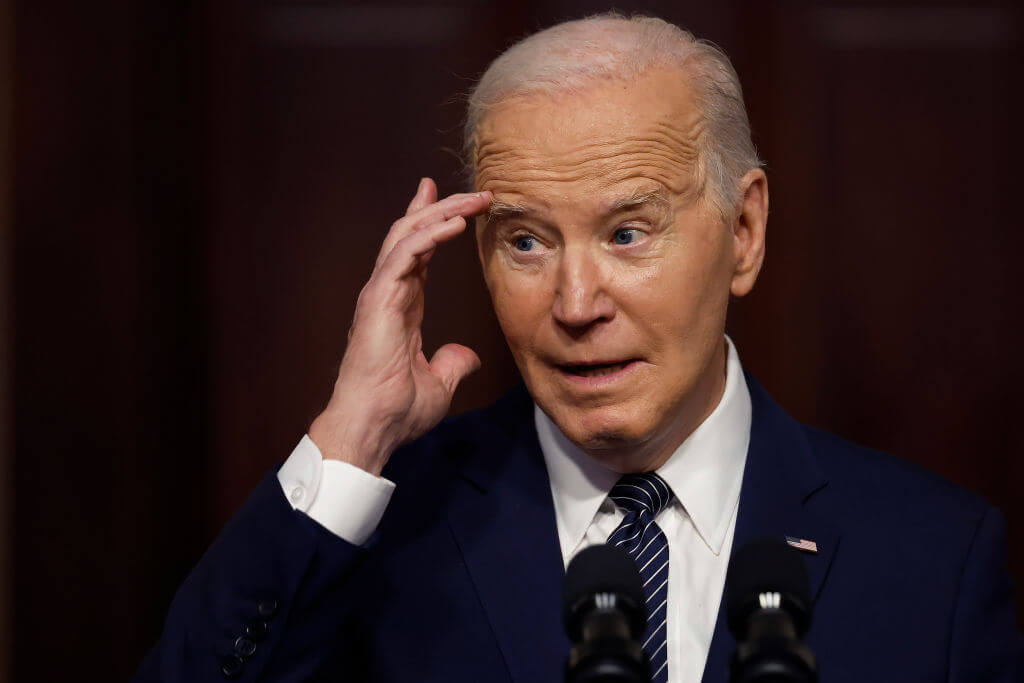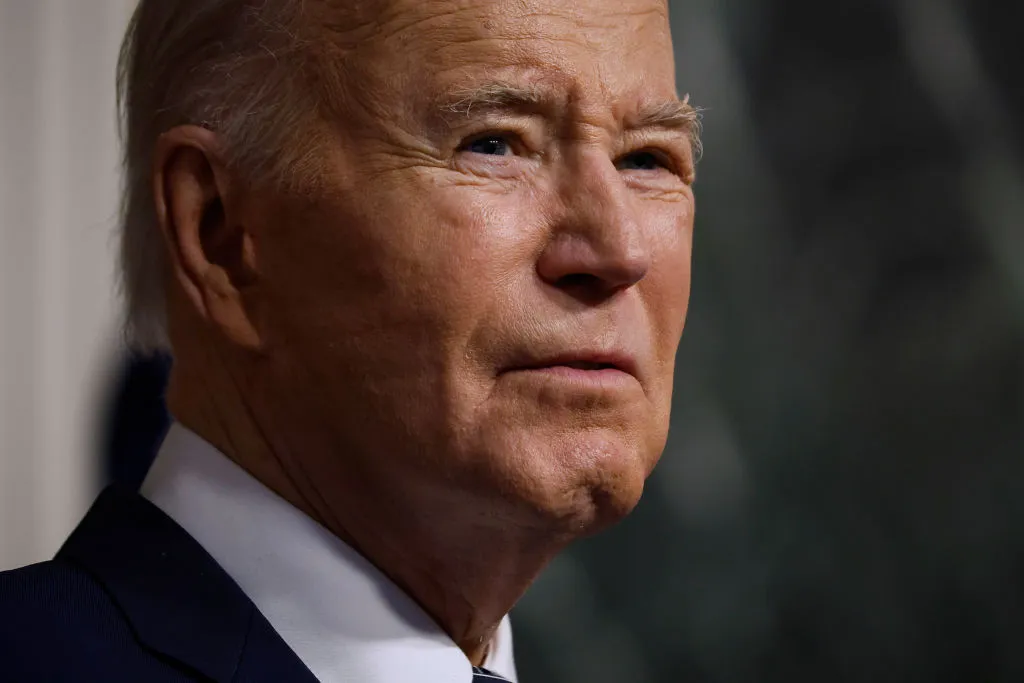A satellite picture shows six American B-2 Stealth bombers parked on the runway at Diego Garcia. The planes – each with a distinctive flying-wing shape, like a bat – are sinister, otherworldly, and seem like a portent. Surely that’s the idea. Donald Trump has warned the Iranian leadership there “will be bombing the likes of which they have never seen before” if they don’t agree to limit their nuclear programme. The US is also sending a second aircraft carrier to the Middle East and anti-ballistic missile batteries to Israel. This is Trump’s “coercive diplomacy”, and so far, it’s working.
President Trump wrote a private letter to the Iranians last month demanding talks. Ayatollah Ali Khamenei, Iran’s Supreme Leader, replied publicly that Tehran would not be bullied into negotiations. Threats wouldn’t get the Americans anywhere, he said, and if they tried to hurt Iran, they’d “get a hard slap”. The Iranian President, Masoud Pezeshkian, said they wouldn’t negotiate under duress, telling Trump: “Do whatever the hell you want.” Yet last weekend, Iran’s foreign minister, Abbas Araghchi, was in Oman for talks with Trump’s Middle East envoy, Steve Witkoff.
The Iranians cavilled about whether the discussions would be face-to-face or indirect. For much of the two-and-a-half hours, Oman’s foreign minister shuttled back and forth with messages between the two sides, who were in separate rooms. At the end, Araghchi chatted for a reported 45 minutes with Witkoff. These were still “talks about talks”, to agree a framework for substantive negotiations. But Araghchi was able to say that “no inappropriate language was used” – Witkoff can be direct – and another meeting is due to be held on Saturday in Rome.
The Iranians insist their nuclear programme is peaceful and they don’t intend to make a weapon. Araghchi also says they don’t want “talks that drag on forever”, but it’s in their interests to get the Americans bogged down in process. Barack Obama’s nuclear deal took two years to negotiate. So, according to Axios, President Trump used his private letter to give Iran a two-month deadline for reaching agreement. He added publicly that he would wait just “a couple of weeks” before hitting Iran with more economic sanctions, “secondary tariffs’ which affect buyers of a country’s goods. As for military action, Trump said after the Oman talks: “We’ll be making a decision very quickly.”
But would Trump really bomb Iran? A retired US Air Force general, Blaine Holt, told Newsmax that the deployment to Diego Garcia was a message: “Do you see our sword?” The B-2s each carry 20 tons of bombs; Khamenei can match Trump for bombast but he knows there’s little his country’s weakened air defenses could do to stop them. Equally, bombing from the air wouldn’t prevent Iran from making a nuclear weapon if they really wanted to. The International Atomic Energy Agency says Iran has already enriched enough uranium to make at least six bombs. The final steps could be completed deep underground.
For the time being, then, the B-2s are leverage and, from his early days building condos, Trump has always used leverage to close the deal. It’s how he managed to buy Mar-a-Lago. When the sellers wouldn’t accept his first offer, he bought the beach between it and the sea and threatened a housing development that would ruin the mansion’s view. He told a biographer: “That drove everybody nuts. They couldn’t sell the big house because I owned the beach, so the price kept going down and down.”
A military campaign that could set the Middle East ablaze is a bit different from ruining some nice Florida beachfront, though. Trump was famously told by his father, Fred, to be a “killer”. As commander-in-chief of the world’s most lethal military, he can follow that instruction on a vast scale. But for all the crude threats, Trump is not a warmonger. Several times in his first presidency he resisted the Iran war hawks, such as his national security adviser John Bolton, who it’s said never met a war he didn’t like. Back then, Trump listened to Fox News’s Tucker Carlson, who shared his isolationist instincts. Now Carlson is using his podcast to warn Trump that attacking Iran would cost ‘thousands’ of American lives: “A bombing campaign against Iran will set off a war, and it will be America’s war.”
There are almost certainly cautious voices inside the White House too. During the election campaign, the now Vice-President, J.D. Vance, said: “Our interest very much is in not going to war with Iran.” If MAGA stands for anything in foreign policy, it’s staying out of overseas military adventures. Sometimes, however, Trump says exactly what he’s going to do. He told Fox News: “There are two ways Iran can be handled: militarily, or you make a deal.”
If Iran calls Trump’s bluff, he could feel compelled to act to preserve his credibility. Issuing wild public threats and being unpredictable is how he does business. Nixon called it the “madman” theory of statecraft. If the madman is shown to be weak – or worse, rational – it would undermine his whole approach to negotiating. Trump’s enemies might choose to tough it out and – on tariffs, Greenland, Canada, North Korea and China – he could find himself losing, not winning. Bombing Iran might seem preferable.
Consistent with the madman theory, Trump shows every sign of simply making things up as he goes along. The Israeli prime minister, Benjamin Netanyahu, was sitting next to Trump in the Oval Office and seemed blindsided when he announced imminent talks between the US and Iran. This was after Trump had said Israel would lead any military action against Iran, and then added a few moments later: “Nobody leads us. We do what we want to do.” What if there’s really no strategy? Do Trump and his advisers know what they’re doing?
In the most skilful hands, brinkmanship with Iran would be incredibly risky. But this, after all, is the gang that added a hostile journalist to their text messaging group and sent him their secret war plans.



